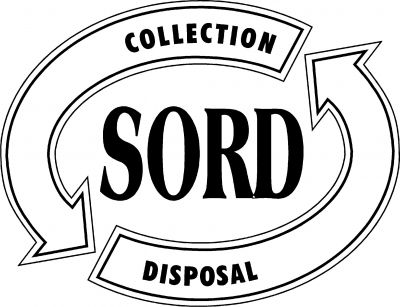Explosive Trash Terrors
May 30, 2024
Explosive Trash Terrors
One person’s trash is another person’s explosive, fire-causing, lethal hazard…. Not all waste should be disposed into your trash cart, dumpster, or landfill. Certain items, materials, and substances can be hazardous if not properly disposed of, resulting in fires, explosions, or even fatalities.
Here at SORD, protecting the safety of the people that are in direct contact with the waste received at our facilities and collected by our refuse trucks is our top priority.
Some of the most common “hard-to-handle” waste items thrown away that lead to explosive problems are:
- Rechargeable Lithium-Ion batteries.
These culprits are the largest offenders in explosions and fires. If lithium-ion batteries are damaged (even dead ones), they can cause fires or explosions. Some of the items include:
- Electronics (laptops, tablets, cameras, and cell phones)
- Power tool batteries
- E-Cigarettes and vape pens
- Car batteries
- Electronic toothbrushes
- Rechargeable toy batteries
- Flammable and Combustible Liquids
Volatile liquids can act as both points of ignition and accelerants. Fumes can build up inside containers and when compacted in garbage trucks or landfills, excess pressure or heat can lead to an explosion or fire. Take caution when disposing of flammable or combustible liquid containers. Even empty, unwashed containers can have liquid residuals that can cause problems. Some of the liquids include:
- Gasoline
- Oil-based paints
- Kerosene
- Motor oil
- Certain paints
- Household Chemicals
Much like flammable and combustible liquids, household chemicals can result in fires or explosions, especially when containers are crushed and chemicals leak or mix. And just like flammable and combustible liquids, empty and unwashed containers can be problematic. Some common chemicals include:
- Bleach
- Ammonia
- Pool chemicals
- Paint thinners and strippers
- Solvents and polish removers
- Certain fertilizers and pesticides
- Compressed Gas Cylinders and Cans
Items in this category are usually highly pressurized and can result in dangerous explosions. Some of these items include:
- Gas grill tanks
- Camping stove containers
- Large industrial cylinders
- Compressed aerosol cans (cleaners, yard control, spray paint)
- Energetic Hazardous Waste
Energetic Hazardous Waste (EHW) is defined by the EPA as waste with the potential to detonate and bulk military propellants. EHW includes most items or products that are designed to explode or ignite. Some of these items include:
- Munitions and firearm ammo
- Consumer and commercial fireworks
- Marine, roadside and signal flares
- Hobby rocket propellants
- Automobile airbag propellants
- Other items include hot ashes from fireplaces, barbecues or burn barrels.
Resources:
I-Team: Improper disposal of lithium-ion batteries causing fires:



